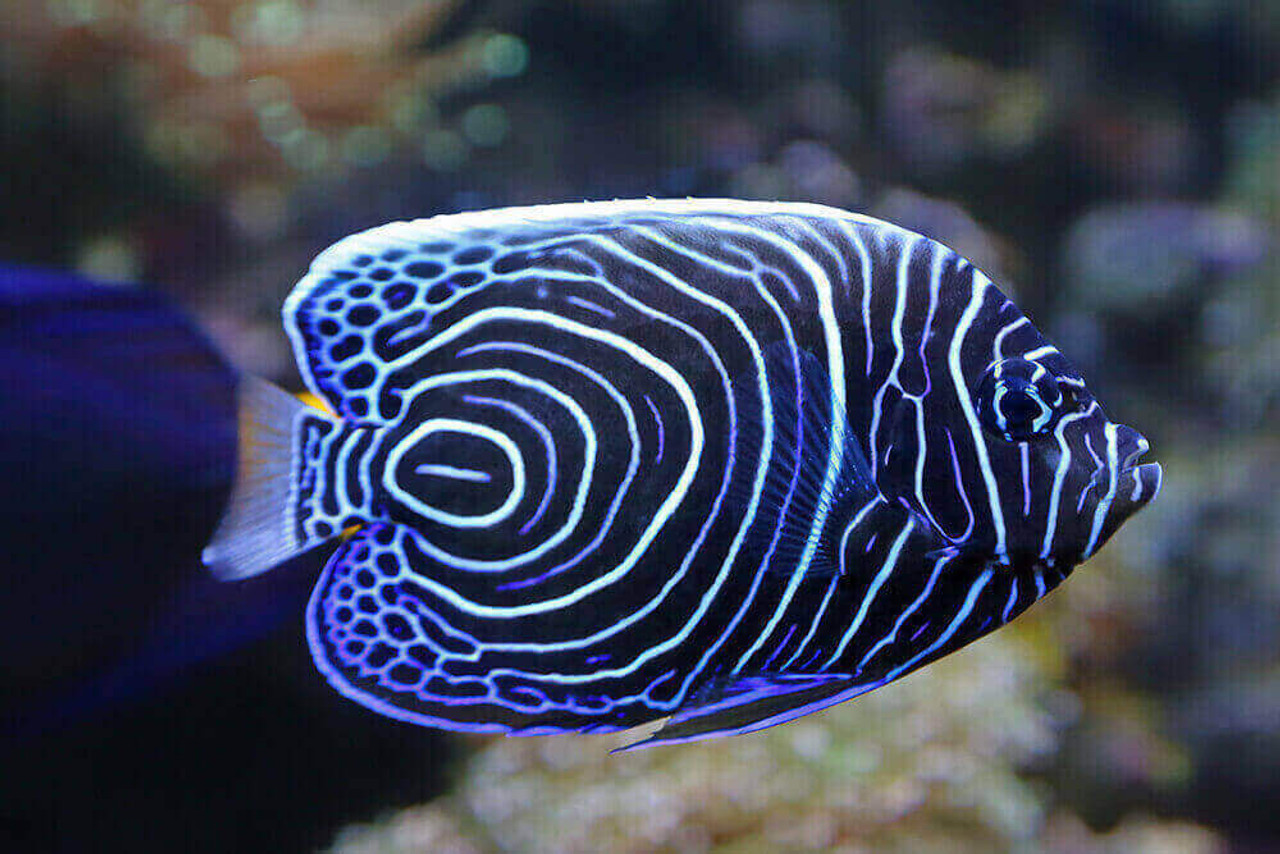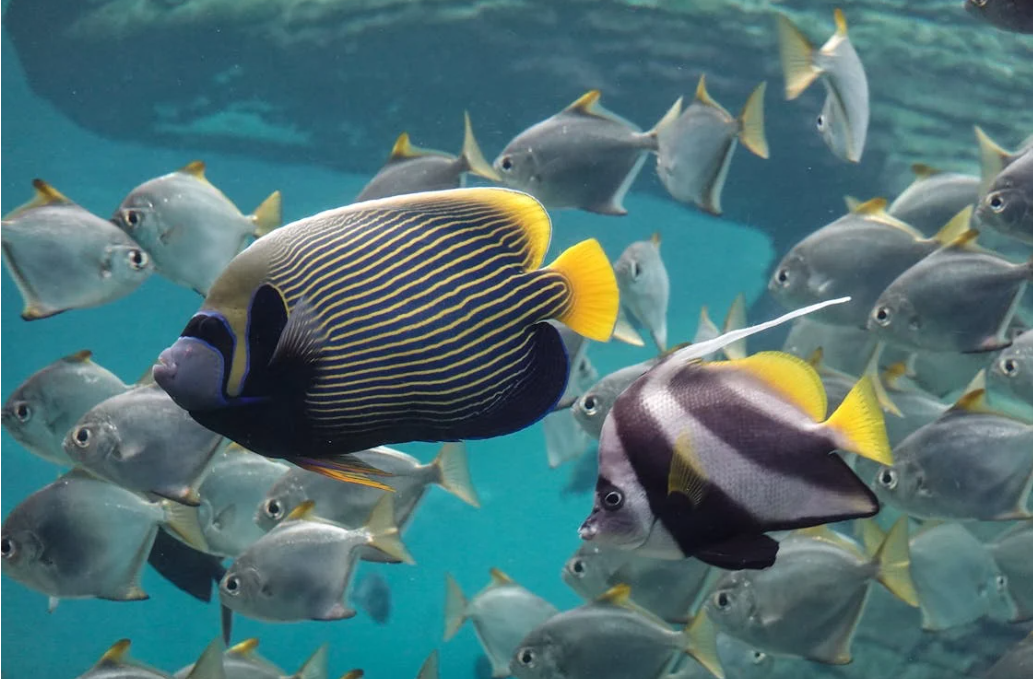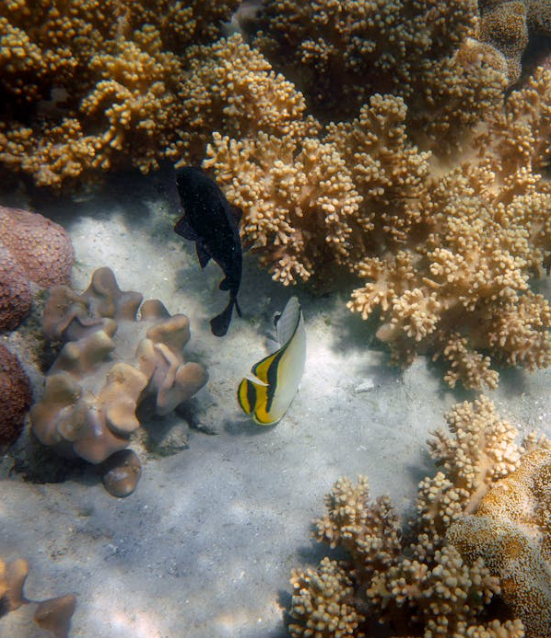Pond Fish Spotlight: Angel Fish
Apr 19th 2024

Apr 19th 2024

The angel fish are some of the most elegant and beautiful freshwater fishes. Besides their astonishing coloration, they have a breathtaking aspect as well owing to their exquisitely executed movements. They are natives of South America, where they populate the calmer basins of the Amazon River. Nowadays, because of their splendid beauty and ease of adaptability, they are found in tanks and ponds across the globe without any problems.
Before attempting to add them to your pond or aquarium, you need to learn the care instructions, habitat requirements, and dietary needs to make certain that they will stay active and healthy.

Angelfish are warm freshwater tropical fish, which do well in warm waters with a good amount of vegetation. Their native region of the Amazon is rich in dense plant life that protects them from predators and provides ideal spawning areas. To achieve these outcomes in a pond or aquarium, you must:
Ensure the water temperature is at 75 to 82°F (24 to 28°C).
Maintain a pH level of 6.0 to 7.0.
Add enough plants to provide cover and nesting sites.
Have at least 10 gallons of water in a tank per fish, or sufficient unused pond space.
Use gentle filtration as angelfish prefer slow-moving waters.
Strong currents should be avoided.
Angelfish grow to a length of 15 to 19 inches which means that they can swim comparatively well in deep waters. Moreover, unlike other species of fish, angelfish can get aggressive, especially after mating. Therefore, putting them in a spacious environment can reduce fights among all of the fish.
The overall well-being of an angelfish is dictated by the food it consumes.
Their diet can be broken down into:
Flakes (which angelfish prefer), as well as pellets and granules.
Bloodworms, Brine shrimp, Daphnia (which can be given to fish either alive or frozen).
Certain insects and the larvae of various insects (for added protein).
Some other foods which are offered infrequently (be sure to cover them and let them sit for long periods of time).
Juvenile angelfish need to be fed roughly three times per day, meanwhile adults can be fed twice a day. Food should not be given excessively as angelfish tend to be messy eaters. Any left over food that isn't consumed can lead to dirty water. Adult angelfish can go up to 14 days without food; but juveniles do need to eat on a regular basis in order to grow.
Angelfish start reproducing around 12 months and can spawn once during every 30-day cycle. As opposed to some fish’s specific breeding and spawning strategies in which they require human assistance, angelfish mate on their own with little to no human involvement needed.
This is what you should know about the breeding practices of angelfish:
They clean the surface on which the eggs will be widely placed.
Your male then lays eggs which are later fertilized by the male.
It takes 3 to 5 days for fertilized eggs to hatch.
Initially, parents might eat the eggs, but with time this behavior changes.
Stable warm water conditions make breeding easier. If you hope to breed angelfish, it is important to have a balanced number of males and females, as well as lots of plants that can help conceal the eggs.

Fitz's Fish Ponds has a huge variety of high quality angelfish and are located at our retail stores. Are you looking to have an angelfish or stock several of them in your pond? If so, then head to our store to get the most lively and healthiest fish around.
Our skilled staff is ready to assist you with any questions you may have about caring for angelfish, pond design, and much more. Come by today to pick up angelfish!
1. What are angelfish?
The angelfish, also known as Pterophyllum, is one of the different species of freshwater fish that are found in the Amazon River basin in South America. They are characterized by their tall, triangular body shape, their beautiful fins, and their beautiful coloring.
2. Can I keep angelfish in my pond?
Angelfish can live in outdoor ponds in warmer regions, but they do best in an indoor aquarium or a heated pond. If kept outdoors, we recommend always supervising them because they need stable water temperatures at roughly 77 F° to thrive.
3. What is the maximum length of angelfish?
Depending on their genetic and environmental factors, angelfish can grow up to 6 inches long and reach a height of 15-19 inches.
4. How long do angelfish live?
Like any other creatures, angelfish need proper care. Upon proper care, they live 8-10 years when in optimal conditions, but sometimes longer.
5. What conditions must be provided for angelfish to do well?
Angelfish Water Temperature
24-28 Degrees Celsius (75-82 Degrees Fahrenheit)
6.0-7.5 pH Level
Water Hardness: 3-8 dGH
Tank/Pond set minimum 10 gallons of water per fish
6. Do angelfish share space with other fishes?
Yes. But for best results, it should be with the same peacefully sized fish, not with large aggressive breeds such as cichlids unless they are also angelfish, or with very small fish that can get eaten.
7. Do angelfish require a filter?
Absolutely! Angelfish prefer their water clean and well filtered. Gentle filtration is better since strong currents can stress them out.
8. Do angelfish require a heater?
Yes, unless the pond or tank stays in the temperature range of 75 to 82 degrees Fahrenheit.
9. Which angelfish plants are the best?
Angelfish do best in heavily planted aquariums with tall and broad leaved plants like:
Amazon Sword
Java Fern
Anubias
Vallisneria
The plants are important in providing shelter, security, and breeding grounds for the angelfish.
10. Is it possible to keep angelfish in an outdoor pond year round?
Only if you live in tropical or warm climates where water temperatures do not drop below 75 degrees Fahrenheit. Otherwise, they need to be brought indoors or be kept in a heated pond.
11. What do angelfish eat?
Angelfish are omnivorous and will eat:
High quality flakes or pellets.
Live or frozen food such as blood worms, brine shrimp, and daphnia.
Blanched vegetables like spinach and peas.
12. How many times do I feed angelfish?
Adults: 2 times a day in small portions.
Juveniles: 3 times a day for healthy development.
13. Can goldfish food be given to angelfish?
For the time being, yes. Angelfish prefer protein enriched food for better health. Goldfish food fails to meet those requirements.
14. Angelfish aggression levels
An important note about territories: angelfish can be aggressive, in particular protective over their breeding areas. Fights among males can occur over females, though in general they are calm, if paired with compatible tank mates.
15. Male vs. Female Angelfish Differences
Males and females are pretty much identical, but a tell for males is: more pronounced forehead, larger size, and more pointed breeding tube (genital papilla).
16. Spawning Activities of Angelfish
When about to spawn, a pair will pick out a flat, available area, like a leaf or even part of the tank wall. They will then make sure it is clean. After that, the two will mate and the female will lay hundreds of eggs, and the male will fertilize them.
17. Angelfish eggs hatching
Depending on the warmth of the water, eggs usually hatch in anywhere from 3-7 days.
18. Angelfish competing cycles
Yes, at times. First time parents are likely to consume their eggs, though after some breeding attempts, this behavior tends to stop.
19. What portion of angelfish fry will progress to adults?
Not every fry will make it through to adulthood. Having a good garden pond or tank with reasonably constant water conditions tends to increase survival rates.
20. What diseases are angelfish most susceptible to?
Ich (White Spot Disease): Tiny white spots located on fins and the rest of the body.
Fin Rot: Fins that seem tattered or altered in color.
Dropsy: Distended abdomen as a result of a bacterial infection.
Hole-in-the-Head Disease: This is characterized by: Ring like depressions on the top of the head resulting from unsatisfactory water quality.
21. What precautions can I take against angelfish diseases?
Keep water parameters steady
Offer a balanced meal
Change the water frequently
Do not overstock
22. What are possible reasons why my angelfish is black?
Angelfish have the potential to darken due to:
Too much stress
Quality of water received is too low
Genetics as they get older
23. Why has my angelfish stopped feeding?
The standards of water may be incorrect
Fish might be undergoing changes and has been stressed by them
Illness or possible parasites
| Hours | |
|---|---|
| sunday | Closed |
| monday | Closed |
| tuesday | 10:00-5:00 |
| wednesday | 10:00-5:00 |
| thursday | 10:00-5:00 |
| friday | 10:00-5:00 |
| saturday | 10:00-5:00 |
| Hours | |
|---|---|
| sunday | 10:00-5:00 |
| monday | Closed |
| tuesday | 11:00-6:00 |
| wednesday | 11:00-6:00 |
| thursday | 11:00-6:00 |
| friday | 11:00-6:00 |
| saturday | 10:00-5:00 |
| Hours | |
|---|---|
| sunday | 10:00-4:00 |
| monday | Closed |
| tuesday | 10:00-5:00 |
| wednesday | 10:00-5:00 |
| thursday | 10:00-5:00 |
| friday | 10:00-5:00 |
| saturday | 10:00-5:00 |
| Hours | |
|---|---|
| sunday | 10:00-5:00 |
| monday | Closed |
| tuesday | 11:00-6:00 |
| wednesday | 11:00-6:00 |
| thursday | 11:00-6:00 |
| friday | 11:00-6:00 |
| saturday | 10:00-5:00 |
| Hours | |
|---|---|
| sunday | Closed |
| monday | 9:00-5:00 |
| tuesday | 9:00-5:00 |
| wednesday | 9:00-5:00 |
| thursday | 9:00-5:00 |
| friday | 9:00-5:00 |
| saturday | Closed |
| Hours | |
|---|---|
| sunday | 10:00-4:00 |
| monday | Closed |
| tuesday | 10:00-5:00 |
| wednesday | 10:00-5:00 |
| thursday | 10:00-5:00 |
| friday | 10:00-5:00 |
| saturday | 10:00-5:00 |
| Hours | |
|---|---|
| sunday | Closed |
| monday | Closed |
| tuesday | 10:00-5:00 |
| wednesday | 10:00-5:00 |
| thursday | 10:00-5:00 |
| friday | 10:00-5:00 |
| saturday | 10:00-5:00 |
| Hours | |
|---|---|
| Sunday | Closed |
| Monday | Closed |
| Tuesday | 10:00-5:00 |
| Wednesday | 10:00-5:00 |
| Thursday | 10:00-5:00 |
| Friday | 10:00-5:00 |
| Saturday | 10:00-5:00 |
| Hours | |
|---|---|
| Sunday | 10:00-4:00 |
| Monday | Closed |
| Tuesday | 10:00-5:00 |
| Wednesday | 10:00-5:00 |
| Thursday | 10:00-5:00 |
| Friday | 10:00-5:00 |
| Saturday | 10:00-5:00 |









| Hours | |
|---|---|
| sunday | Closed |
| monday | Closed |
| tuesday | 10:00-5:00 |
| wednesday | 10:00-5:00 |
| thursday | 10:00-5:00 |
| friday | 10:00-5:00 |
| saturday | 10:00-5:00 |
| Hours | |
|---|---|
| sunday | 10:00-5:00 |
| monday | Closed |
| tuesday | 11:00-6:00 |
| wednesday | 11:00-6:00 |
| thursday | 11:00-6:00 |
| friday | 11:00-6:00 |
| saturday | 10:00-5:00 |
| Hours | |
|---|---|
| sunday | 10:00-4:00 |
| monday | Closed |
| tuesday | 10:00-5:00 |
| wednesday | 10:00-5:00 |
| thursday | 10:00-5:00 |
| friday | 10:00-5:00 |
| saturday | 10:00-5:00 |
| Hours | |
|---|---|
| sunday | 10:00-5:00 |
| monday | Closed |
| tuesday | 11:00-6:00 |
| wednesday | 11:00-6:00 |
| thursday | 11:00-6:00 |
| friday | 11:00-6:00 |
| saturday | 10:00-5:00 |
| Hours | |
|---|---|
| sunday | Closed |
| monday | 9:00-5:00 |
| tuesday | 9:00-5:00 |
| wednesday | 9:00-5:00 |
| thursday | 9:00-5:00 |
| friday | 9:00-5:00 |
| saturday | Closed |
| Hours | |
|---|---|
| sunday | 10:00-4:00 |
| monday | Closed |
| tuesday | 10:00-5:00 |
| wednesday | 10:00-5:00 |
| thursday | 10:00-5:00 |
| friday | 10:00-5:00 |
| saturday | 10:00-5:00 |
| Hours | |
|---|---|
| sunday | Closed |
| monday | Closed |
| tuesday | 10:00-5:00 |
| wednesday | 10:00-5:00 |
| thursday | 10:00-5:00 |
| friday | 10:00-5:00 |
| saturday | 10:00-5:00 |
| Hours | |
|---|---|
| Sunday | Closed |
| Monday | Closed |
| Tuesday | 10:00-5:00 |
| Wednesday | 10:00-5:00 |
| Thursday | 10:00-5:00 |
| Friday | 10:00-5:00 |
| Saturday | 10:00-5:00 |
| Hours | |
|---|---|
| Sunday | 10:00-4:00 |
| Monday | Closed |
| Tuesday | 10:00-5:00 |
| Wednesday | 10:00-5:00 |
| Thursday | 10:00-5:00 |
| Friday | 10:00-5:00 |
| Saturday | 10:00-5:00 |
